The smell of fish is in the air, and your dog is scooting their booty across the floor. That can only mean one thing: their anal glands need expressing because they couldn't do it themselves. You schedule an appointment at the vet, and they take the necessary steps to ensure those glands are fully expressed. But now that you're back home, your dog is exhibiting signs of pain. Keep reading to review the causes of why your dog is in pain after their anal gland expression.
What Are Anal Glands?
Dogs have a pair of small, oval-shaped sacs near their anus called anal glands. These glands produce a distinctive fluid with a fishy scent that is unique to each individual dog. While defecating, the anal glands secrete this fluid, which can be recognized by other dogs that may pause to smell the excrement or the surrounding area before it is picked up. Dogs use their sense of smell to greet each other, often by sniffing each other's hindquarters and recalling the specific scent from previous encounters.
What is Anal Gland Expression?

Dogs may need the assistance of a veterinarian to express their anal glands, as they cannot always do it themselves. If a dog has an anal gland issue, it will display symptoms such as scooting across the ground and continuously licking its anus. You may also notice a fishy odor more frequently on your furniture and car seats. In such situations, manual expression can be helpful. During this process, the veterinarian applies Vaseline to the index finger, wears latex gloves, and inserts their finger into the dog's anus to feel along the side of the anus for the sac. The sac is then gently pressed to expel the liquid, which is collected on a paper towel to prevent a mess.
What Are The Signs Your Dog Is In Pain After Their Anal Gland Expression?

Signs of pain can differ from dog to dog for a variety of conditions as well as sometimes be difficult to spot as dogs can be experts at hiding their pain. If your dog is displaying any of these signs of pain, they may be suffering from anal gland pain:
- Yelping
- Excessively licking their rear end
- Scooting
- Reluctance to be touched near their rear end
- Biting their rear end
- Whining or crying when trying to poop
- Snapping
- Limping
- Hiding
What Causes Pain After Anal Gland Expression?
When you expect your pup to find full relief from the emptying of their anal glands, there are times when doing so can bring on even more discomfort and pain. While the procedure itself is generally routine and may induce some pain during the expression, there shouldn't be any pain afterward. There are various potential causes for why your furry friend experiences pain after their anal gland expression, and these should be addressed. Here are some of those potential causes of why your dog is in pain after their anal gland expression:
Rectal Tears
Dogs can experience rectal tears during anal gland expression if the vet performing it was too rough or if the dog had possibly suffered a prior trauma or tear before the expression, which would have worsened the pain.
Rectal Polyps or Tumors
Rectal polyps are benign growths in the rectal region of dogs and may form after an anal gland expression. Large polyps could be malignant, but this is rare. Signs of rectal polyps or tumors include scooting, bloody stool, difficulty defecating, and general signs of pain. Dogs displaying these signs should be promptly taken to the vet.
Anal Abscess
Dogs have a chance of developing anal abscesses at some point. These painful infections can preexist before an anal gland expression and may continue to cause pain after the procedure, potentially leading to abscess rupture. Anal abscesses are pus-filled sacs that can release into the anus and rectum, causing severe discomfort, and dogs should be seen by a vet immediately.
Anal Sac Abnormalities
Fistulas and folliculitis are two common anal sac abnormalities that can cause pain and scooting in dogs after an anal gland expression. Fistulas occur when the anal tissue develops sores, while folliculitis is when the hair follicles in a dog's anus become inflamed due to feces. Vets should be notified immediately, as they may treat these conditions with medication or perform surgery to remove the glands.
Impaction
Dogs with loose stool or diarrhea can have the water from this build-up in the sacs, causing inflammation. Impaction can lead to pain, itching, scooting, irritation, and possibly an infection. When the anal glands are impacted, it can be difficult to determine if they've been fully emptied, and these dogs may require additional manual expressions by the veterinarian.
Injection Pain
Dogs may receive an injection before their anal gland expression if they have hardened stools or impacted anal glands, as these conditions can make manual expression challenging. Injection site pain may occur for a few days following the routine procedure.
Inadequate Expression
When anal glands are inadequately expressed and not fully emptied during manual expression, residual material may remain in the glands, leading to discomfort and pain.
How You Can Help Your Dog?

First, your veterinarian should always be consulted if your dog is in pain following a manual anal gland expression to diagnose the exact cause and provide proper protocol or medication. But, there are some things you can do to assist your dog in finding pain relief.
- Elizabethan Collar or Donut Collar: When dogs are in pain after a manual anal gland expression, they are likely to bite and excessively lick near their rear end. These collars can effectively prevent them from accessing that area to avoid further infection and sores.
- Warm Compress or Heating Pad: Dogs suffering from anal gland pain can find some relief from a warm compress or heating pad. For heating pads, they should either be made for pets or, if it’s the one from your closet, set on low with an auto-off feature.
- Stool Supplements: Dogs who are suffering pain after a manual anal gland expression will also be in pain when relieving themselves. Stool softener supplements can ease this process from them as some dogs will completely avoid pooping altogether if they’re in pain.
- Diet Changes: By adding more fiber into your dog’s diet, you can help your dog from being constipated or inflaming their anal glands further as it makes bowel movements much easier for them. Common fiber additives include sweet potato, pumpkin, and apples with the skin removed.
- Anal Gland Wipes: Anal gland wipes can aid in the healing of infections and soothe the skin around the inflamed area. HICC Pet® Anal Gland Wipes are a safe and effective option that uses Deoplex® and their patented fermented coconut oil formula to provide a holistic aid.
Anal Gland Spray: HICC Pet® Anal Gland Spray is formulated with Hypochlorous Acid and Deionized Water to gently cleanse anal glands, prevent and heal irritation and eliminate odors.
Please consult your veterinarian before utilizing any of these suggestions.
Conclusion
Please note that the information provided in this article is for educational and informational purposes only. We are not veterinarians, and the content shared here should not be considered professional veterinary advice.
If you have any questions regarding copyrights or the use of materials in this article, please contact us for clarification.

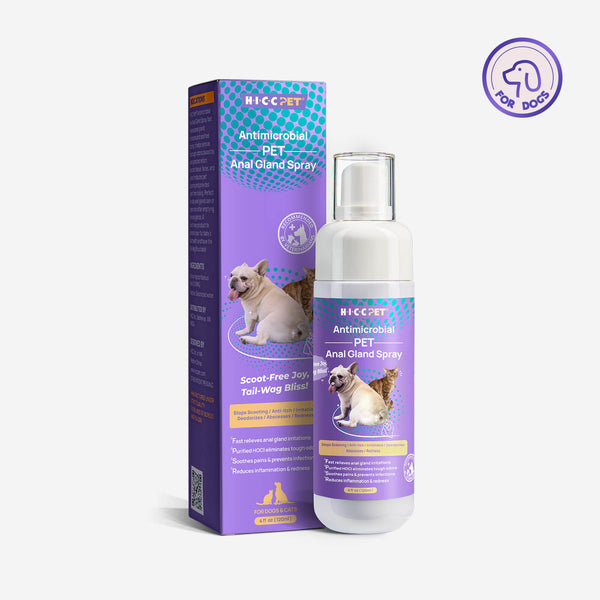
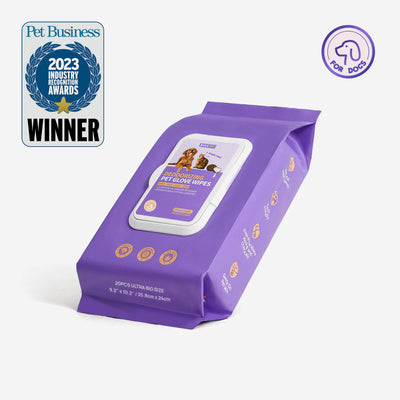
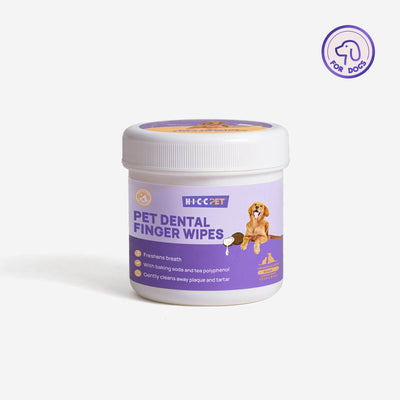
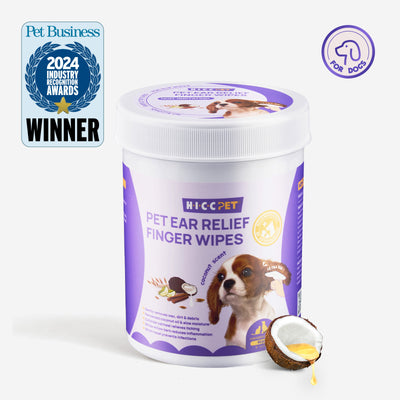

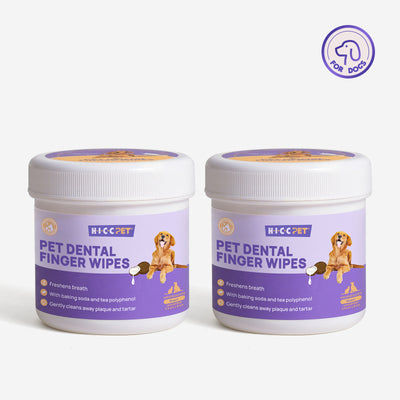
Thanks for your interaction and support.